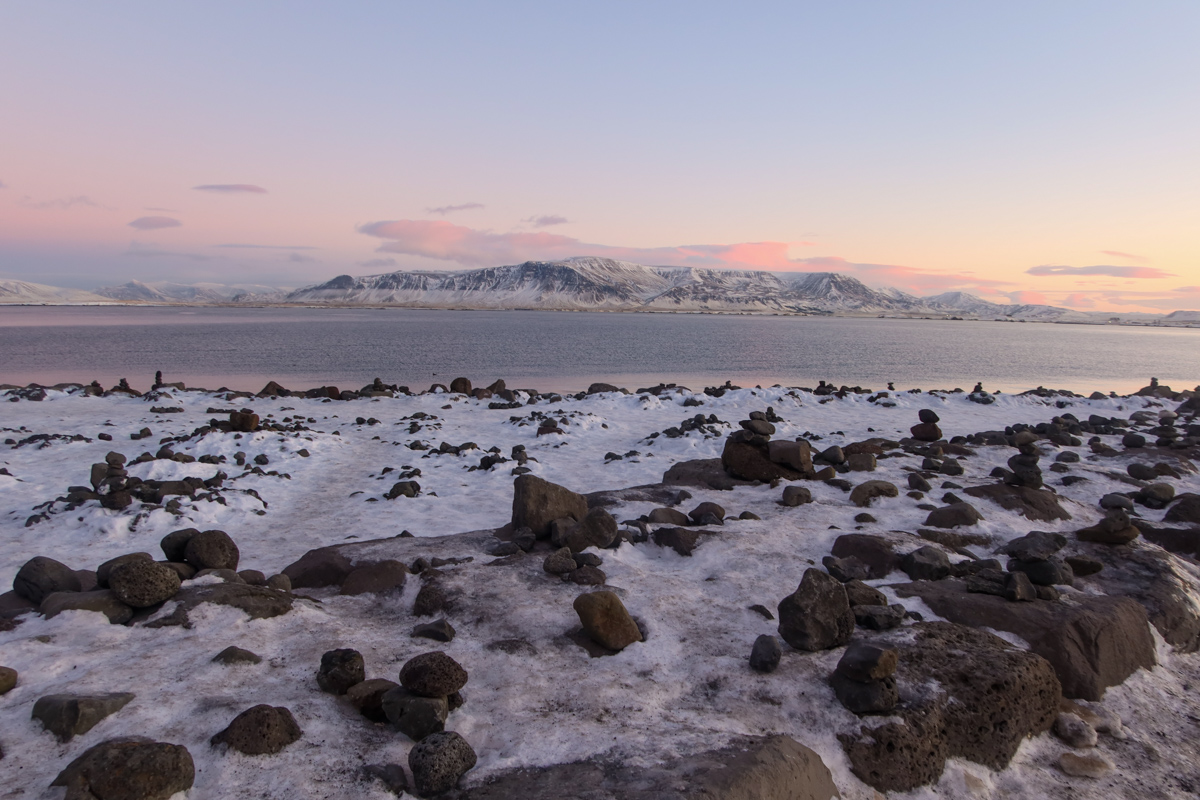Planning a winter trip to Reykjavik and wondering about the likelihood of snow? Is Reykjavik a guaranteed winter wonderland, or are its snowflakes as elusive as the Northern Lights?
That’s what this article is all about.
We’ll guide you through the seasons and months when Reykjavik experiences snowfall, dig into why it snows (or doesn’t!) compared to other parts of Iceland, and share some practical tips for enjoying the city’s winter beauty.
So, if you’re eager to experience Reykjavik in the snowy season, you’re in the right place. Let’s dive into everything you need to know!
This blog post may contain affiliate links.
Does It Snow in Reykjavik?

Yes, it certainly does snow in Reykjavik!
Situated near the Arctic Circle, the city’s winter weather is influenced by its northern location and the surrounding ocean, resulting in snowfall that can range from light flurries to substantial accumulations.
However, the city’s coastal position and the moderating influence of the Gulf Stream often lead to milder winter temperatures compared to other parts of Iceland, and snow might not always linger on the ground for long.
While snowfall in Reykjavik is a common occurrence, the exact timing and intensity can vary from year to year.
So snow is actually never guaranteed in Reykjavik in winter, but it’s likely.
When I was on my January vacation in Reykjavik, the city was covered in snow!
When does it snow in Reykjavik?

Snowfall in Reykjavik is a common occurrence in the colder months; they snowy season extends from late autumn to early spring.
Let’s take a look at the different months when it can snow and its likelihood in Reykjavik.
Does it snow in Reykjavik in September?
September marks the beginning of autumn in Reykjavik, and it doesn’t snow this early.
Temperatures start to dip but not to freezing – you’ll need to go to Iceland’s mountains to find it.
Does it snow in Reykjavik in October?
Snowfall is very infrequent in October, but early frosts and occasional snowflakes might appear toward the end of the month.
Does it snow in Reykjavik in November?
November sees a more significant chance of snow, as winter begins to settle in.
Snow showers become more common, and the ground may be covered with a light dusting. Toward the end of the month, snowfall might become heavier.
Does it snow in Reykjavik in December?
December is a prime month for snow in Reykjavik, with more regular and substantial snowfalls.
That said, temperatures remain relatively mild due to the ocean’s influence.
Does it snow in Reykjavik in January?
January is one of the coldest and snowiest months in Reykjavik. It got to -10°C or 14°F when I was there in January, and snow was everywhere!
That being said, it does depend on the year and it’s not guaranteed!
Does it snow in Reykjavik in February?
Snowy conditions continue in Reykjavik throughout February, with the possibility of heavy snowfalls.
Again, it’s never guaranteed, but it’s likely!
Does it snow in Reykjavik in March?
As March rolls around, snowfall continues, although it often starts to wane towards the end of the month.
My friends visited Reykjavik at the end of March 2023, and there wasn’t any snow in the city itself.
Does it snow in Reykjavik in April?
In April, the signs of spring become more evident, and snow becomes a much rarer sight as temperatures begin to rise.
Does it snow in Reykjavik in May?
Snow in May is quite rare.
The city shifts firmly into spring, and any lingering snow typically melts away.
Does it snow in Reykjavik in summer? (June, July, August)
Snowfall during the summer months in Reykjavik is extremely unlikely.
The days are long, and temperatures are relatively warm.
Why does it snow in Reykjavik?
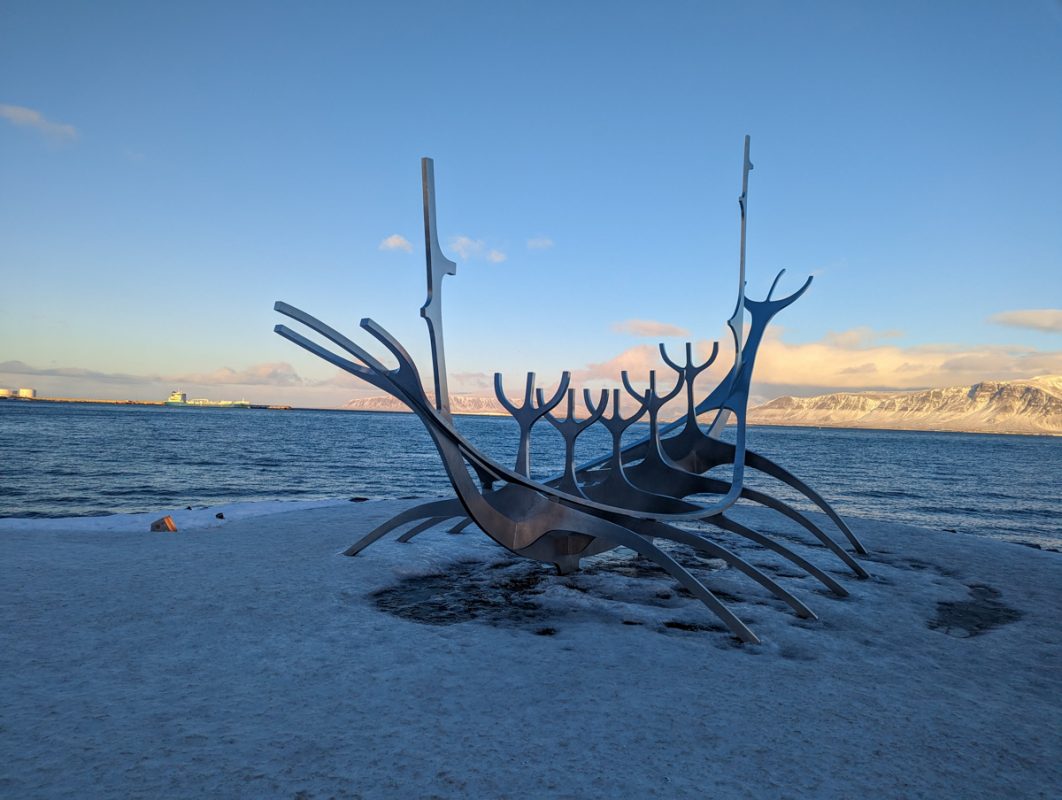
Snow in Reykjavik? Absolutely!
But why does it snow here, and why does it seem different from other parts of Iceland?
The city’s winters are typically cold enough to allow for snowfall.
Iceland’s position near the Arctic Circle means that temperatures often drop below freezing, especially during the dark winter months.
But it doesn’t get anywhere near as cold as areas inland – on my winter trip to Iceland, my Golden Circle tour guide told me that while it was “only” -10°C (14°F) in Reykjavik, it got down to -40°C (-40°F) in the interior of the country in the night!
Why is this?
Reykjavik is by the coast, which affects its climate.
The Atlantic Ocean nearby has a warming influence, moderating temperatures, especially because the Gulf Stream brings warm waters from the Caribbean.
This means that while Reykjavik does get snow, it’s often less than inland areas that don’t have the ocean’s moderating effect.
Impacts of Snow in Reykjavik

Snow in Reykjavik has impacts on daily life, transportation, and even tourism.
Let’s dive into how snow shapes the city in different ways.
How snow affects daily life and transport
When the snow starts falling in Reykjavik, life doesn’t stop, but it does change a bit.
Snow can lead to slippery roads and sidewalks, so people tend to slow down and take extra care.
Buses and cars might be delayed – we were waiting ages for a bus one day on our January trip – but they typically do turn up eventually (and they’re heated!).
Locals are used to it, and snowploughs are ready to clear the way.
Special snow-related events and activities
Reykjavik comes alive with winter activities when it snows.
Think ice skating at Tjörnin pond, or local festivals like Þorri (mid winter festival)
Recent trends in snowfall due to climate change
In recent years, there’s been a noticeable shift in snowfall patterns in Reykjavik due to climate change.
Some winters see more snow, others less, and the timing can be a bit unpredictable.
Scientists are keeping an eye on these changes, studying what it means for Reykjavik’s future.
Predictions for the future
What’s ahead for Reykjavik’s snow?
Well, predictions point to continued changes.
As global temperatures rise, Reykjavik might see milder winters and less frequent snowfall.
But it’s a complex picture, and factors like ocean currents and local geography will continue to play a role.
Tips for travelling to Reykjavik in the snow
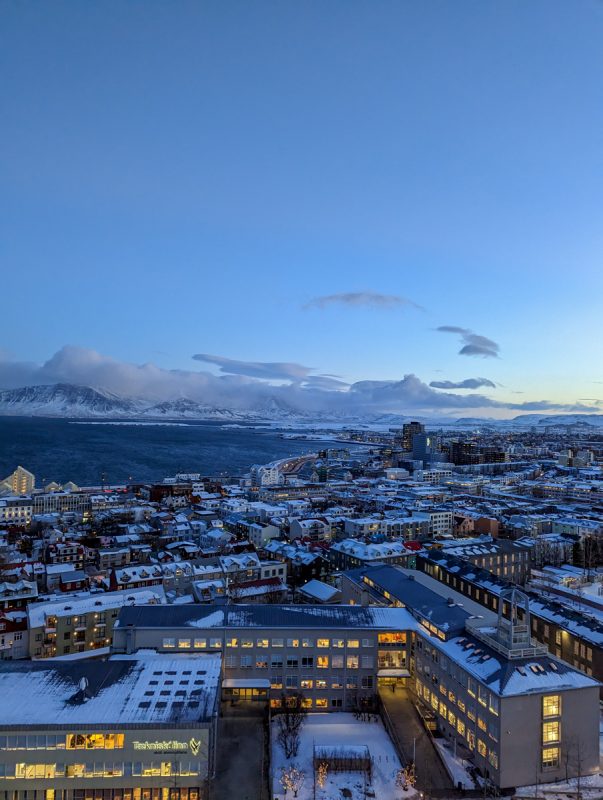
Planning a winter trip to Reykjavik? That’s an excellent idea – I think the city’s at its best in the coldest months!
I visited Iceland in January and had the most magical few days exploring.
So much so, that I’ve planned a trip back in late November this year (and I hope I’ll see more snow!).
But while Reykjavik in the snow is glorious, you can never be too prepared! Here are some tips for safe snowy travels in the city.
Stay informed about weather and road conditions
Reykjavik’s winter weather can be a bit unpredictable, so keep an eye on local forecasts.
The Icelandic Met Office has reliable information available in English.
Road conditions might change quickly, so check updates regularly, especially if you’re renting a car.
Safe.is also has lots of information about Icelandic road conditions.
Dress appropriately
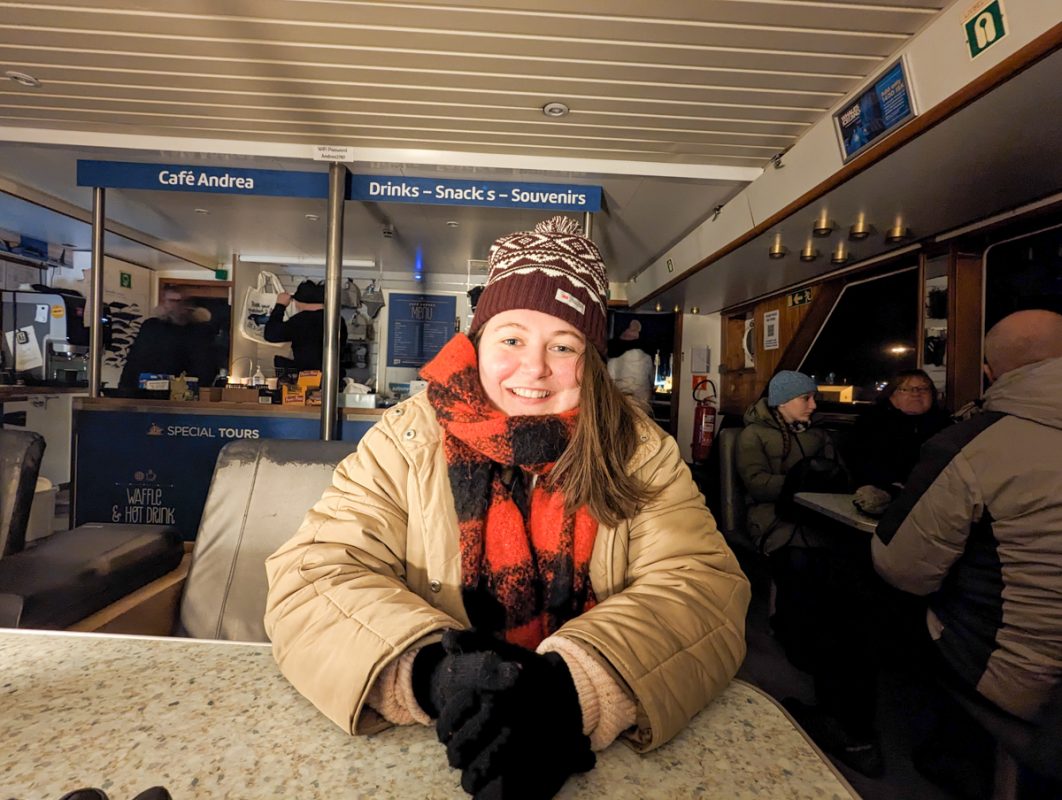
You’ll want to pack warm clothing, including waterproof layers.
Trust me, nothing dampens the fun like being cold and wet – I only realised after walking around all day that my boots were no longer waterproof!
Boots with good traction, gloves, and a cozy hat are must-haves.
Check out my full Iceland winter packing list here.
Know the local transport options

If driving in the snow isn’t your thing, Reykjavik’s public transportation is reliable, and taxis are available.
There are countless winter day trips from Reykjavik, but I wouldn’t recommend driving around Iceland with no snow training.
The solution? Book a tour, where a local will take you to all the best spots!
There are tonnes of Iceland tours on Get Your Guide – click here to check them out!
Warm up in Iceland’s geothermal waters
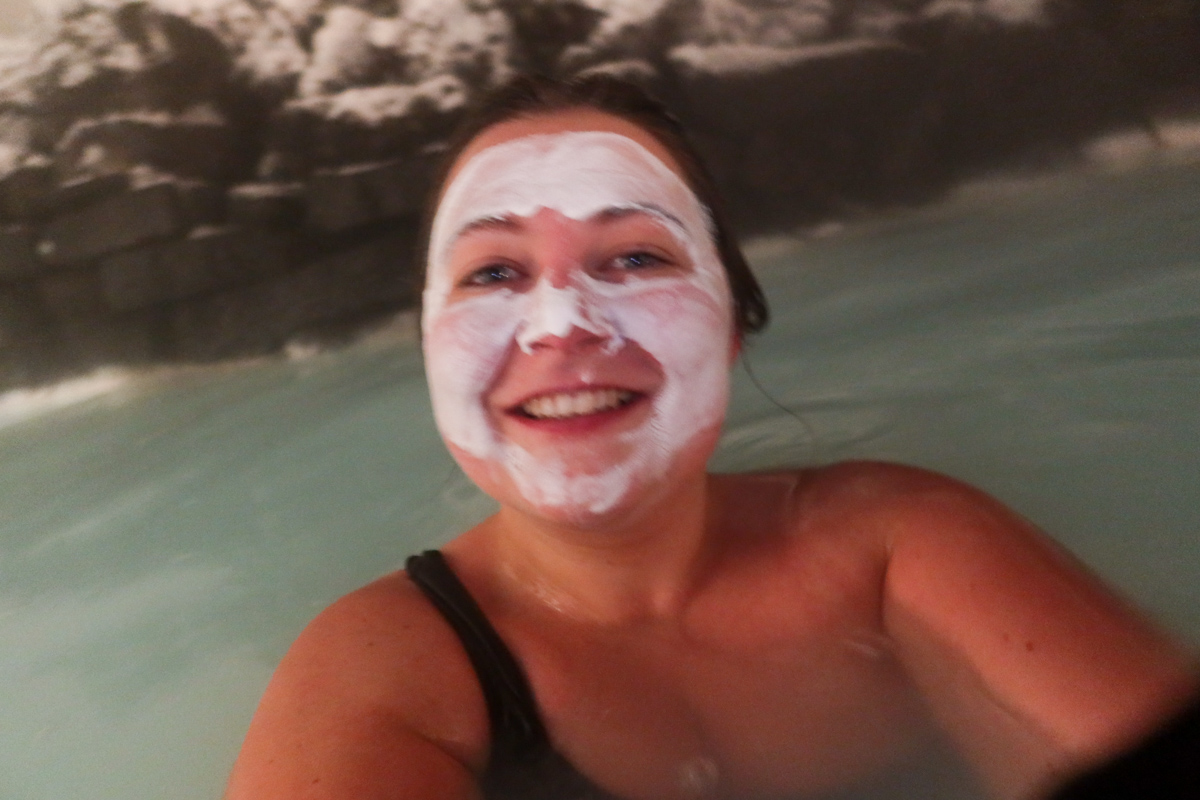
If it gets a little too cold in all the snow, head to a geothermal pool!
The Blue Lagoon is the most famous, and it stays open throughout winter.
Closer to Reykjavik, you’ll find the Sky Lagoon.
Or, in the city itself, there’s Laugardauslaug which is more of a local pool with hot tubs. It’s much cheaper than the other two!
Embrace the short days
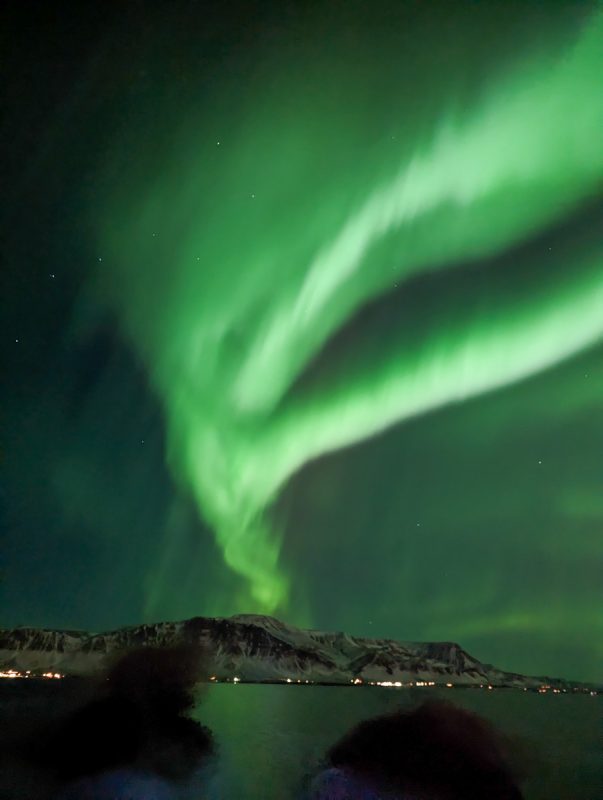
Winter days in Reykjavik can be short, with limited daylight.
But that means cosy nights, epic sunrises and sunsets that go on for hours and chances to see the Northern Lights!
Make sure you have travel insurance
Winter weather can lead to delays or cancellations, so consider travel insurance that covers weather-related disruptions.
I always use SafetyWing – check out their policies by clicking here.
Here’s my video about visiting Reykjavik in the snow!
Check out my YouTube video where I explore Reykjavik in snowy weather:
Now you’re ready for Reykjavik in the snow!
Reykjavik in the snow completely enchanted me; and I’ve spent the last few months shouting from the rooftops, trying to convince anyone and everyone to book a winter trip to the city.
If you need more persuading, check out the rest of my Iceland travel guides!

